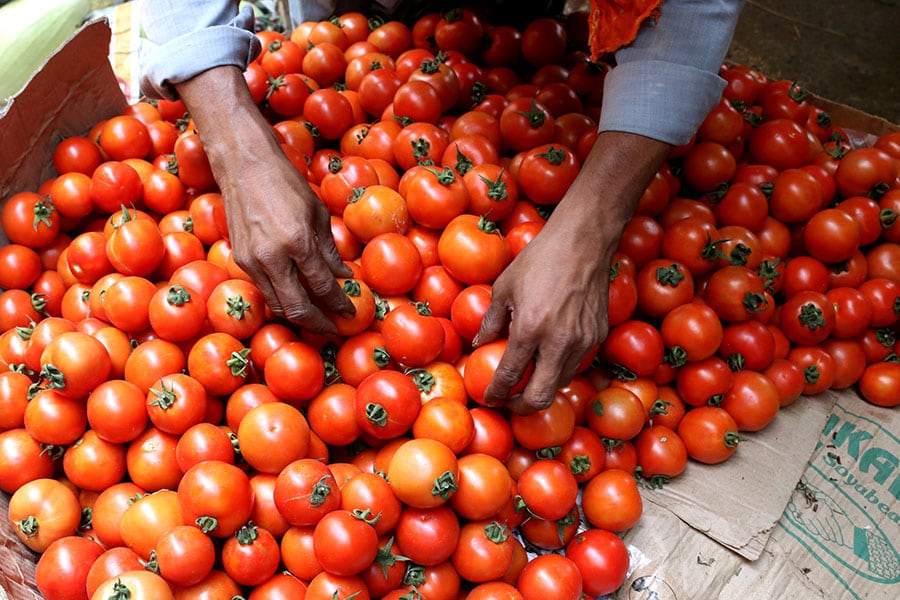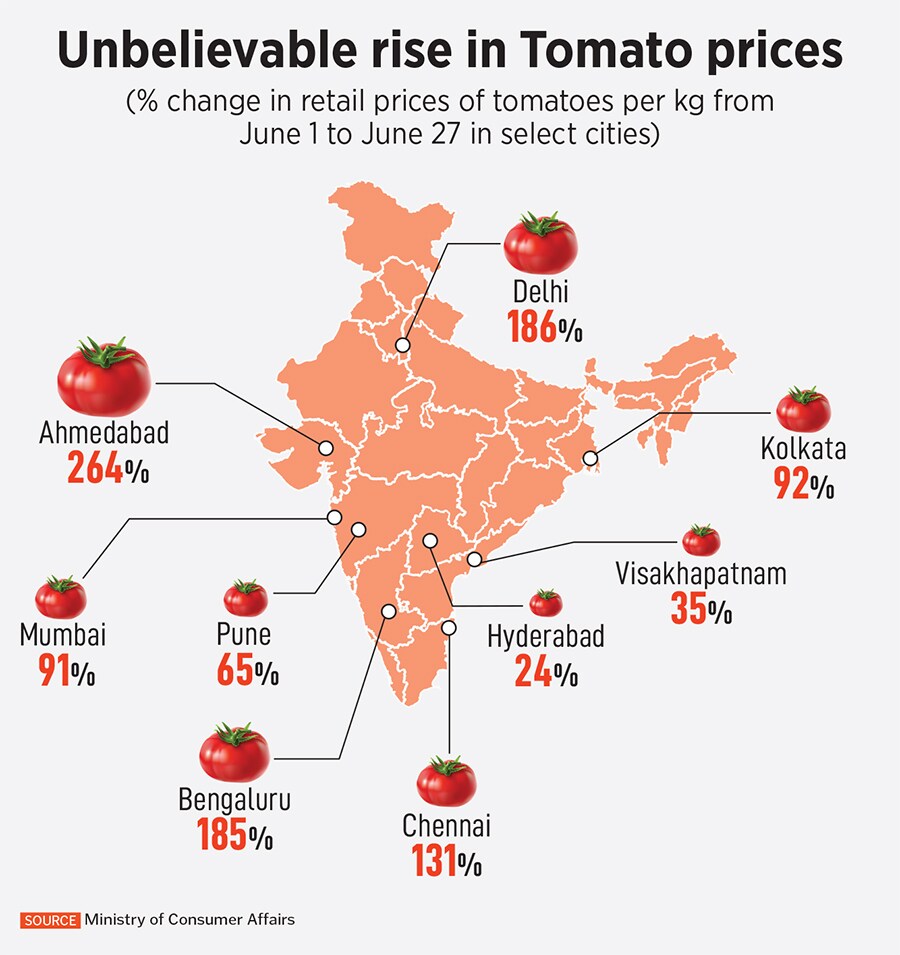 Rise in tomatoes prices has had a profound effect on countless households. Image: Debajyoti Chakraborty/NurPhoto via Getty Images
Rise in tomatoes prices has had a profound effect on countless households. Image: Debajyoti Chakraborty/NurPhoto via Getty Images
You must have heard of gold being stolen, or cash, or assets. However, in Karnataka, a woman farmer alleged that tomatoes worth Rs 2.5 lakh, accounting for 50-60 bags, were stolen from her agricultural farm on the night of July 5, according to a report in The Indian Express.
This is due to a sudden increase in retail tomato prices. In Delhi and Chennai, tomatoes were priced at Rs110/kg and 117/kg, respectively. The highest was recorded at Siliguri in West Bengal—with 1 kg of tomato costing Rs 155. The average all-India retail price of tomatoes is at Rs 83.29/kg, with a modal price of Rs 100/kg, as per data maintained by the consumer affairs ministry.
According to the Price Monitoring Cell, Ministry of Consumer Affairs, Food and Public Distribution, tomato prices almost doubled in several Indian cities in June, with cities like Ahmedabad and Delhi seeing a jump of 264 percent and 186 percent, respectively.

Tomatoes are a staple among many states in India, especially the southern states. This rise in prices has had a profound effect on countless households, placing a financial burden on their budgets or forcing them to reduce their tomato consumption.
Why the sudden rise in price?
The surge in tomato prices can be attributed to a combination of factors, including delayed monsoon, inadequate production and extreme heat. The sudden rise in temperatures during March and April has also been identified as a significant cause, as it led to pest attacks on tomato crops, resulting in lower yields and higher market rates. Further, the supply of tomatoes has been disrupted in the past two weeks from the producing states, where the harvesting and transportation processes have been adversely affected. These circumstances have had a notable impact on the availability and affordability of tomatoes.
Also read: Will monsoon sway milk prices in India?
What about vegetable prices?
While the rise in tomato prices has been the talk of town, other vegetables, including cabbage, chillies, ladyfinger, cauliflower and potatoes, have also seen a slight rise in prices in some states. As reported by the Times of India, vegetable prices in Patna have experienced a substantial increase since the start of May. The cost of cauliflower reached ₹60 per kg, compared to ₹40 per kg in early May. Likewise, cabbage costs ₹60 per kg now instead of ₹30-40 per kg earlier. The prices of potatoes and onions have also gone up, from ₹20 per kg in early May to ₹30 per kg in July. In states like West Bengal, there has been a 30 to 35 percent increase in average vegetable prices, according to the Press Trust of India. The reason why tomato prices have seen the highest spurt could be because its production is limited to certain parts of the country, thereby adding to the transportation charges, as well as their lower shelf life.
Also read: How India eats: Thali gets costly as tomato prices hit the roof
Which are the major tomato producing regions in India?
As per the Ministry of Agriculture, the major tomato producing states are Andhra Pradesh, Madhya Pradesh, Karnataka, Gujarat, Odisha, West Bengal, Maharashtra, Chhattisgarh, Bihar, Telangana, Uttar Pradesh, Haryana and Tamil Nadu. These states account for 91 percent of the total tomato production of the country.
When will prices reduce?
The government recently commented on the rising prices of tomatoes and stated that the current surge is due to a seasonal phenomenon, and that prices are likely to decrease within the next 15 days and normalise within a month.
 Rise in tomatoes prices has had a profound effect on countless households. Image: Debajyoti Chakraborty/NurPhoto via Getty Images
Rise in tomatoes prices has had a profound effect on countless households. Image: Debajyoti Chakraborty/NurPhoto via Getty Images





